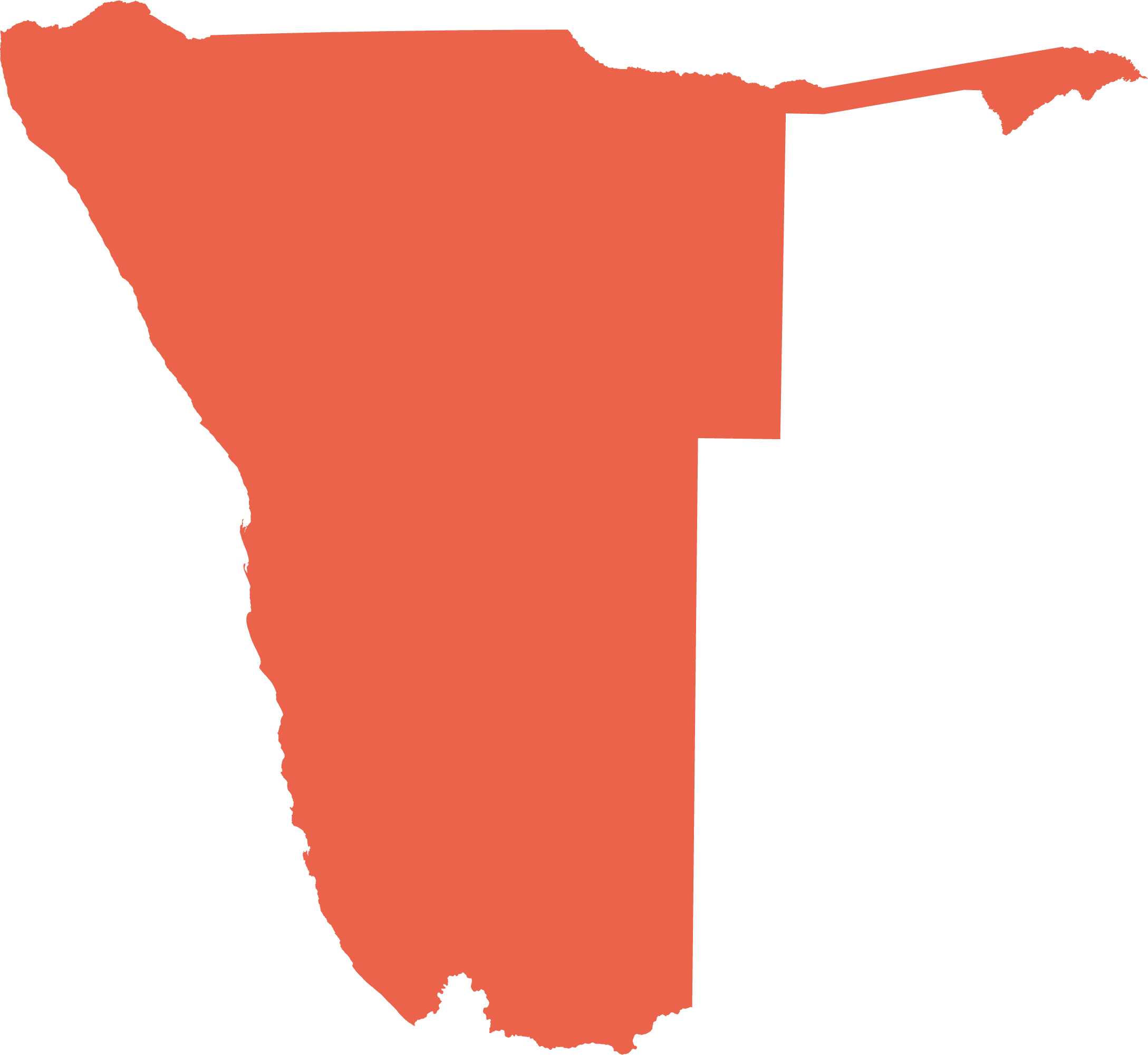Fog
3.06 Annual and monthly frequency of fog and low cloud in the Namib Desert11
Annual average

Fog defines much of the Namib Desert's climate. It occurs during all months of the year in a band along the coast that may extend more than 100 kilometres inland. The maps here, derived from satellite and ground data, illustrate the average frequency of fog and low cloud along the entire Namibian coast over the year and from month to month. Inland fog or low cloud occurs most frequently in the spring and summer months between September and March. Seasonal changes in airflow (figure 3.01) likely drive this pattern.
The central area of the coast experiences the highest frequency of fog, with a third of the days in each year having some fog. Ground-based measurements at the coast suggest that, here, fog peaks in winter, between April and August.12
While the satellites detect the presence of all low cloud, the distinction between fog and cloud is often difficult. The height of the cloud base increases between August and March, and much of the cloud at the coast at this time (which is evident in the maps) would not be recorded as fog at ground level.
July
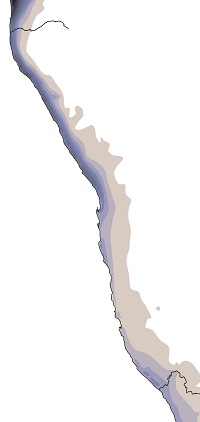
August
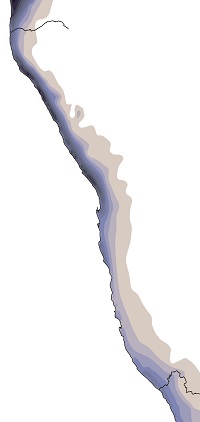
September
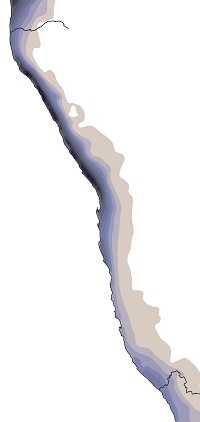
October

November
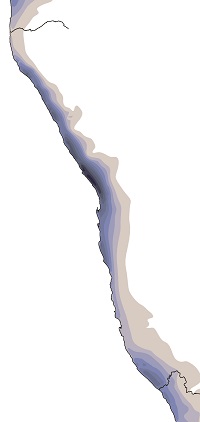
December

January

February

March
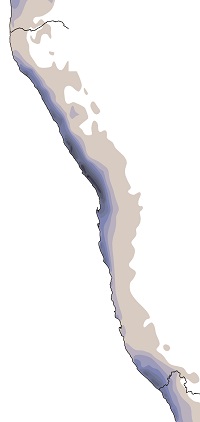
April
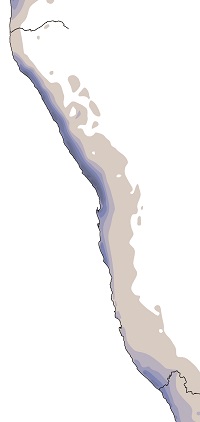
May

June
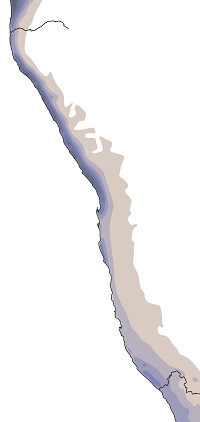
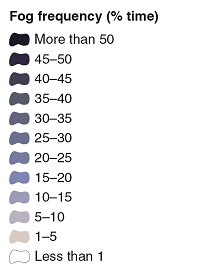

Photo: J Henschel
The presence of fog enables many of the plants and animals in the Namib to survive, despite the lack of rain. In some areas, fog can also play an important role in soil water dynamics.13 Research has shown that on average 3.5–5.0 litres of water per day can be harvested from fog on a square-metre collecting surface.14 Many plants and at least 48 animal species are known to use free water from fog – for example, by channelling water to their roots (plants) or drinking condensed water droplets (animals) – but only a few animals, such as this tenebrionid beetle, actively harvest fog; it stands with its abdomen facing the fog, which allows droplets to condense on its body and run down to its mouth.15

Photo: MODIS Terra, NASA
Fog in the Namib is often associated with extensive marine stratus clouds. These are low-level clouds (below a few hundred metres) that typically form during the night and dissipate during the day. The clouds form when moist air, trapped by a layer of sinking air produced by the South Atlantic Anticyclone, is cooled by the low sea surface temperatures and becomes saturated. In situations where stratus clouds extend over land, the altitude of the clouds and the local topography determine whether fog occurs at the ground or not. It is still an open question as to how much of the water in the fog is from marine sources and how much comes from condensation over the cool night-time desert.
